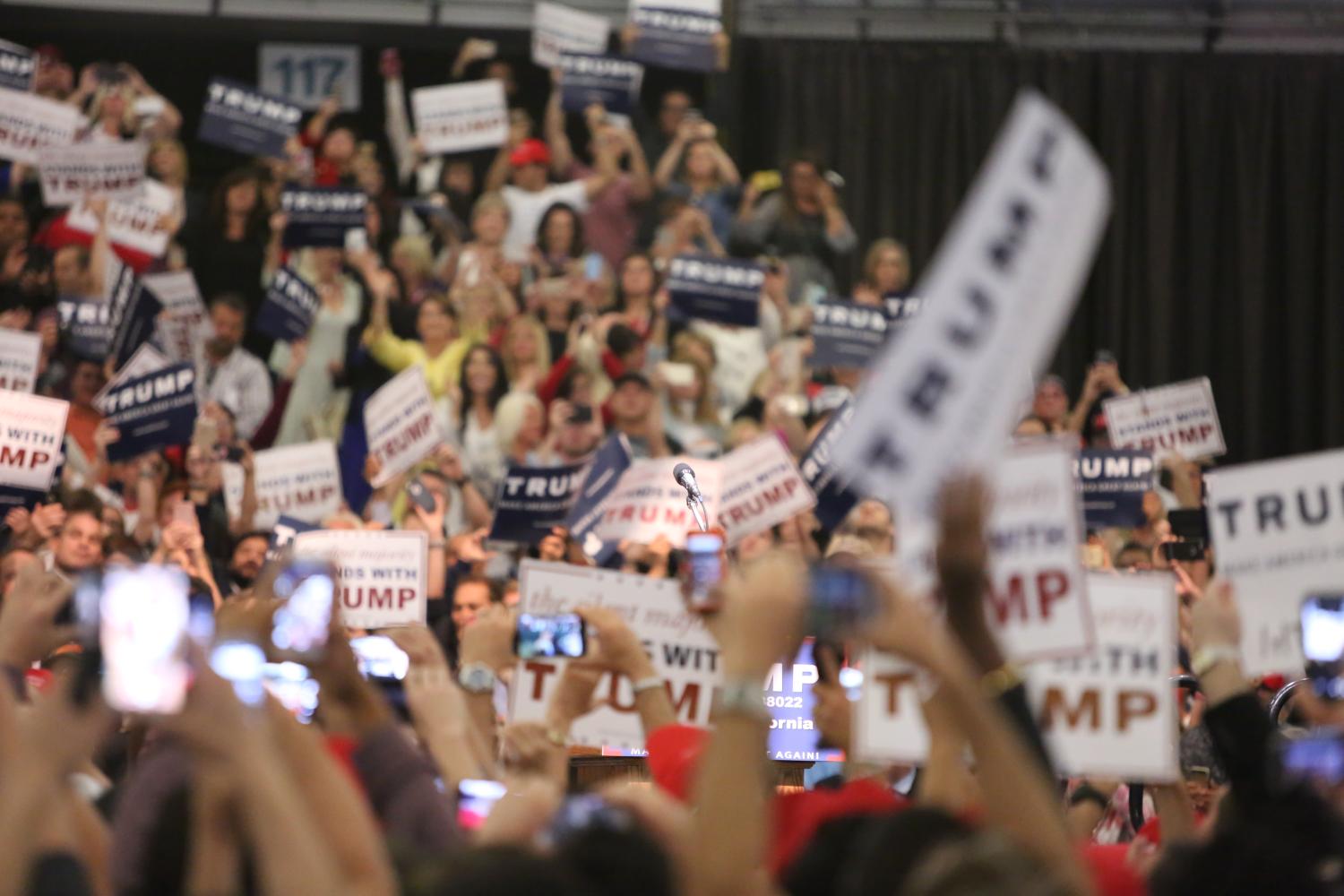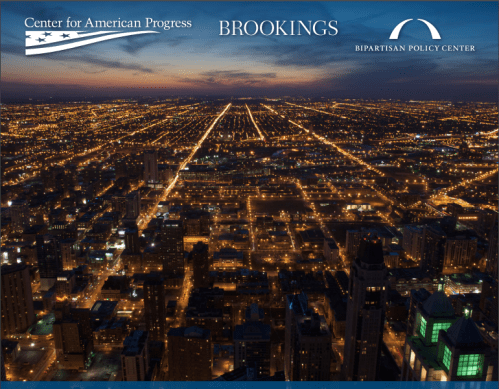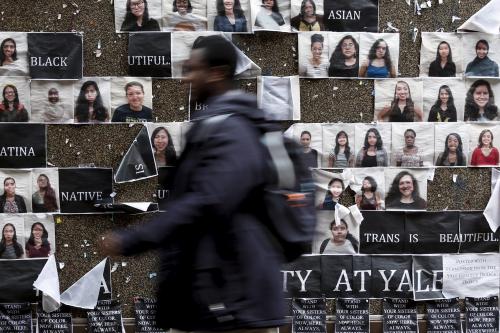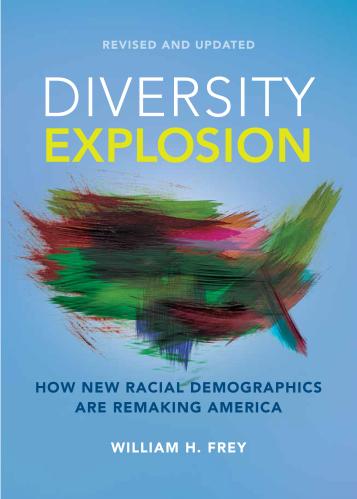The recent elections of Donald Trump and Barack Obama were influenced in no small measure by shifts in the nation’s underlying demographic structure—the rise of communities of color, the increase in the number of older Americans, the sharpening of education divisions—and the distinctive voting behavior of these demographic groups. This 2018 report of the States of Change project, the fourth in an annual series,1 examines an array of future presidential election outcome scenarios—from 2020 through 2036—that could arise as the demography of the nation and its 50 states changes over the next 18 years.
These scenarios, developed by the authors, include outcomes that favor both Republican and Democratic candidates. They are not intended as predictions but are simulations based on assumptions about different demographic groups’ future voting patterns. Each of the alternative scenarios assumes the same projections for the nation’s underlying demographic structure of eligible voters (EVs) with respect to race, age, and education attainment. As such, the scenarios provide for a more in-depth understanding than national or state polling trends can supply about how emerging voting patterns may interact with changes in the demography of the nation’s electorate to affect future popular vote and Electoral College outcomes.
Many analysts suggest that if current voting patterns remain the same as in recent elections, the projected rise of communities of color—Hispanics, blacks, Asians, and others—will favor Democrats as the Republican-leaning white share of the electorate shrinks. However, the aging of the population and the continued substan-tial political clout of whites without college educations played a key role in electing Republican Donald Trump. Because the demography of these latter groups differs across states in ways that tend to benefit Republicans, this report finds that quite a few future scenarios could mimic the result of the 2016 election—a Democratic win in the popular vote with a Republican win in the Electoral College.
This delicate balancing act will provide a challenge for the party that cannot be met by simply waiting for demographic change to reshape the electorate.
The 2020 through 2036 presidential election scenarios presented here are of four types:
1. Assuming 2012 and 2016 voting patterns in future elections: Not surprisingly, a scenario that attributes the voting patterns of all groups from Obama’s 2012 win to future more racially diverse populations, yields solid Democratic popular vote and Electoral College wins from 2020 through 2036.
More surprisingly, changing demography has a clear impact on future outcomes when Trump’s 2016 voting patterns are attributed to the 2020 population. Here the modest shift toward more racially diverse voting populations in several states is enough to provide Democratic wins in both the popular vote and Electoral College—not only in 2020 but in subsequent elections.
However, the 2016 election result was unusual because of a high level of third-party voters. When those extra third-party voters are allocated back to one of the two major parties, based on underlying partisan preferences, projections to 2020 show a dead heat in the Electoral College.
2. Voting assumptions about communities of color: Several scenarios assume that future voting patterns of racial groups will differ markedly from those observed in 2016. Taking note that whites tend to have the highest voting turnout rates of all racial groups, a scenario that assumes that all racial groups turn out at the same rate improves the voting clout of racial minorities, especially Hispanics and Asians. When this assumption is made—while leaving other aspects of 2016 voting constant—Democrats win both the popular and Electoral College votes in 2020 as well as subsequent elections. Additional scenarios for blacks assume their 2012 turnout rates, their 2012 Democratic voting preferences, and both together—which factored into Obama’s election victory—continue in the future. In all three of those black voter scenarios, Democrats win both the popular vote and Electoral College in future elections.
However, there is one scenario here that yields Republican Electoral College—though not popular vote—wins: a pro-GOP margin swing of 15 points among Hispanics, Asians, and other nonblack racial minorities. But if these groups shift their margins by the same amount toward Democrats, the latter party wins by large margins in 2020 and future elections.
3. White college graduate versus white noncollege-educated voting preferences: The 2016 election showed a sharp divide in Republican voting between white college graduates and whites without college educations. Among the simulations examined, the greatest opportunity for Republicans to extend their 2016 victory model assumes an expansion of the already-substantial voting margin that the GOP has gained among white noncollege-educated voters. When this margin is expanded by 10 points, Republicans win both the 2020 Electoral College and popular vote. They continue to win the Electoral College—though not the popular vote—through 2036, despite broadening diversity and other predicted changes across the country.
Several other scenarios are explored by shifting future voting patterns of white college graduates and whites without college educations in different ways. While strong Democratic wins occur when either group shows improved Democratic support, it is clear that the most persistent gains for Republicans come from those scenarios where they improve their appeal to noncollege-educated whites.
4. Voter group trade-offs: Several scenarios assume that voting swings toward one party on the part of one demographic group could precipitate a backlash voting swing toward the other party among another group. One scenario postulates that an increased Republican margin of 15 points among Hispanics, Asians, and other nonblack minority groups, perhaps due to increased outreach efforts, might trigger a swing toward greater Democratic support—back to relatively good 2012 levels—among noncollege-educated whites. In such a trade-off, Republicans would be disadvantaged and lose both the 2020 popular and Electoral College vote. In another simulation, a Republican swing of 10 points among noncollege-educated whites is countered by Democratic swings of 10 and 15 points, respectively, among white college graduates and among Hispanics, Asians, and other minorities. This simulation also yields 2020 Democratic popular vote and Electoral College victories and bigger ones thereafter. But in a scenario where increased Republican success among white noncollege-educated voters is traded for increased Democratic success among white college graduates, the GOP does gain an Electoral College victory in 2020, even while losing the popular vote.
In many of the simulations that favor Democrats in the Electoral College, especially those beyond 2020, swing states that favored Republicans in the 2016 election turn Democratic. These include Florida, North Carolina, Georgia, and Arizona, in the Sun Belt, as well as Pennsylvania, Michigan, Wisconsin, Iowa, and Ohio in the North. But in scenarios where Republicans are Electoral College victors, they retain most of their 2016 swing states and often add new ones, including Nevada, Minnesota, New Hampshire, and Maine.
The scenarios in this report suggest that there are paths for both parties to win the Electoral College in 2020 and beyond. For Republicans, future success is tied to mobilizing their strength among whites without college educations—a still-substantial but shrinking portion of the electorate—while attaining gains among at least some growing demographic groups. A narrow Republican reliance on noncollege-educated whites would lead, at best, to continued popular vote losses and ever smaller Electoral College wins, which would eventually peter out.
While Democrats appear to have the advantage in future popular vote contests, their success in the Electoral College will likely require some combination of intensifying their support among voters of color and improving their margins among white, particularly white noncollege-educated, voters. This delicate balancing act will provide a challenge for the party that cannot be met by simply waiting for demographic change to reshape the electorate.
The Brookings Institution is committed to quality, independence, and impact.
We are supported by a diverse array of funders. In line with our values and policies, each Brookings publication represents the sole views of its author(s).








